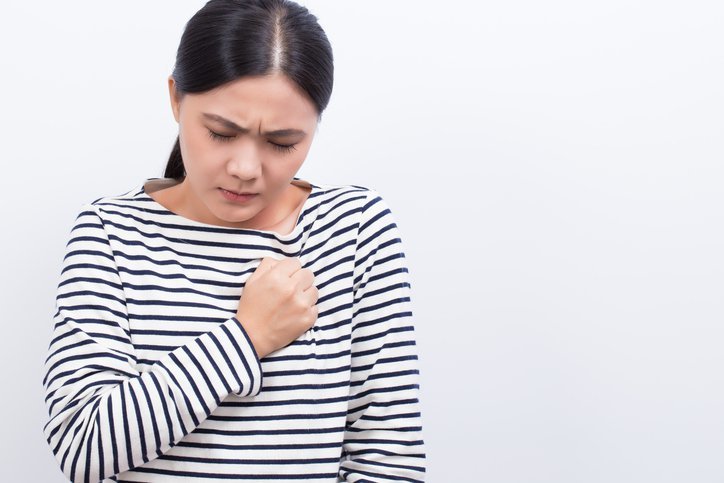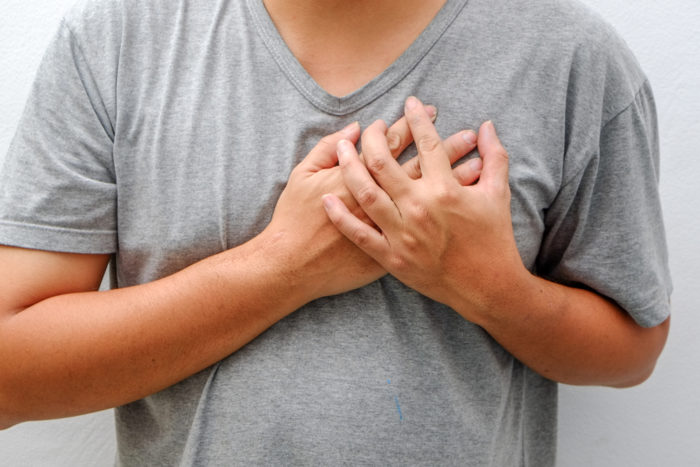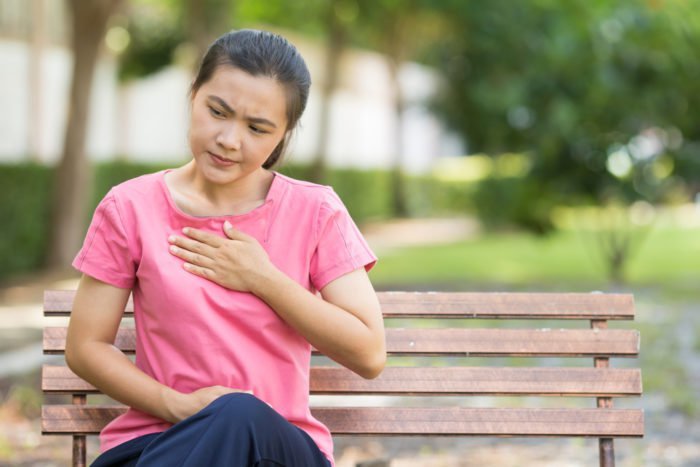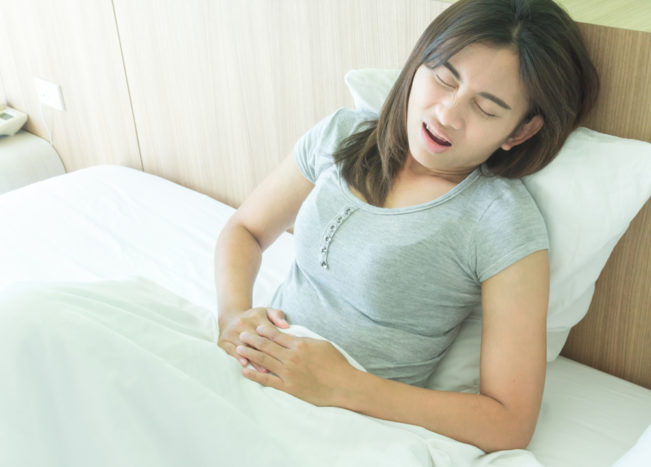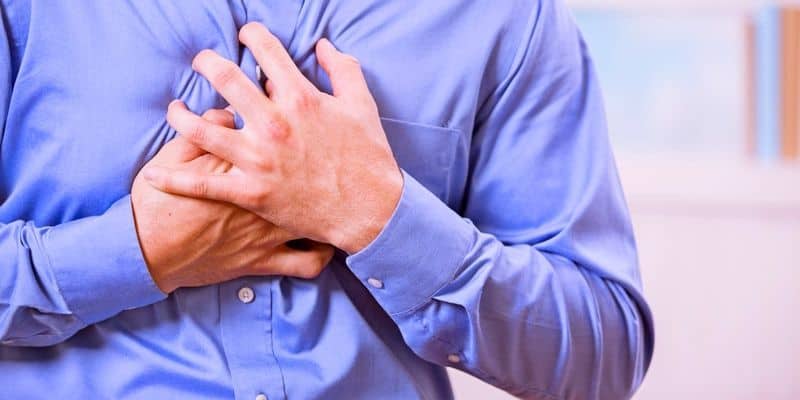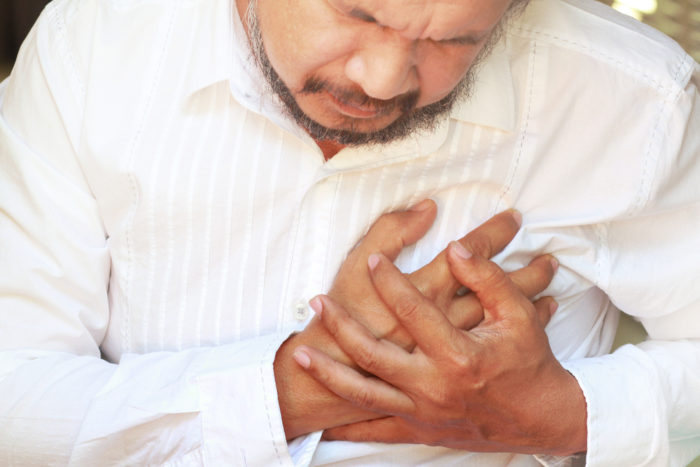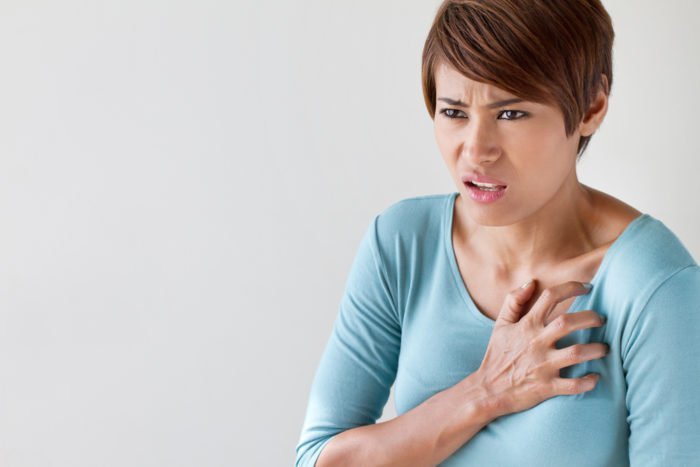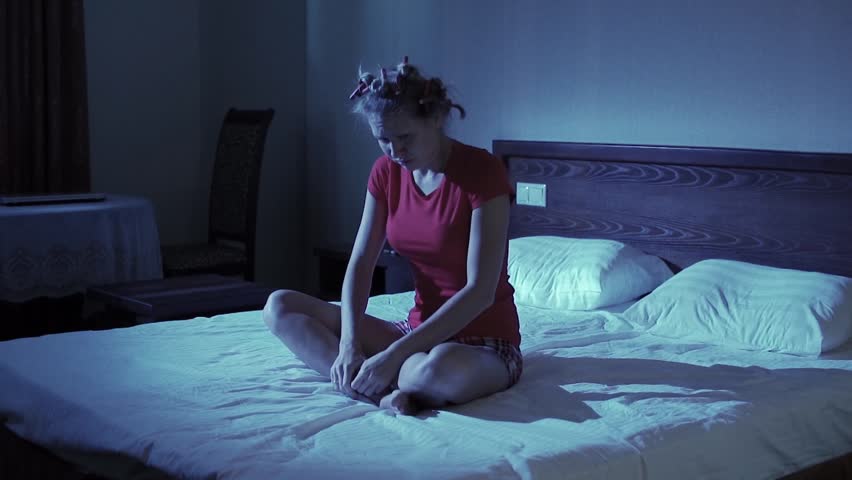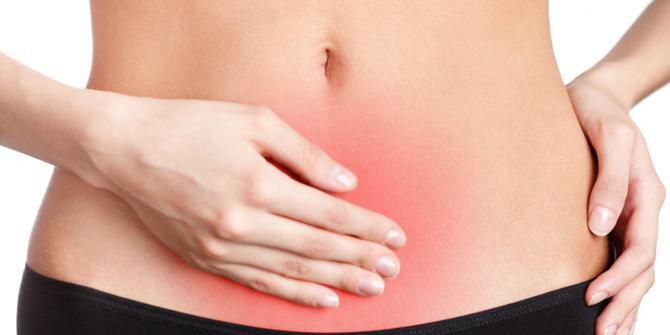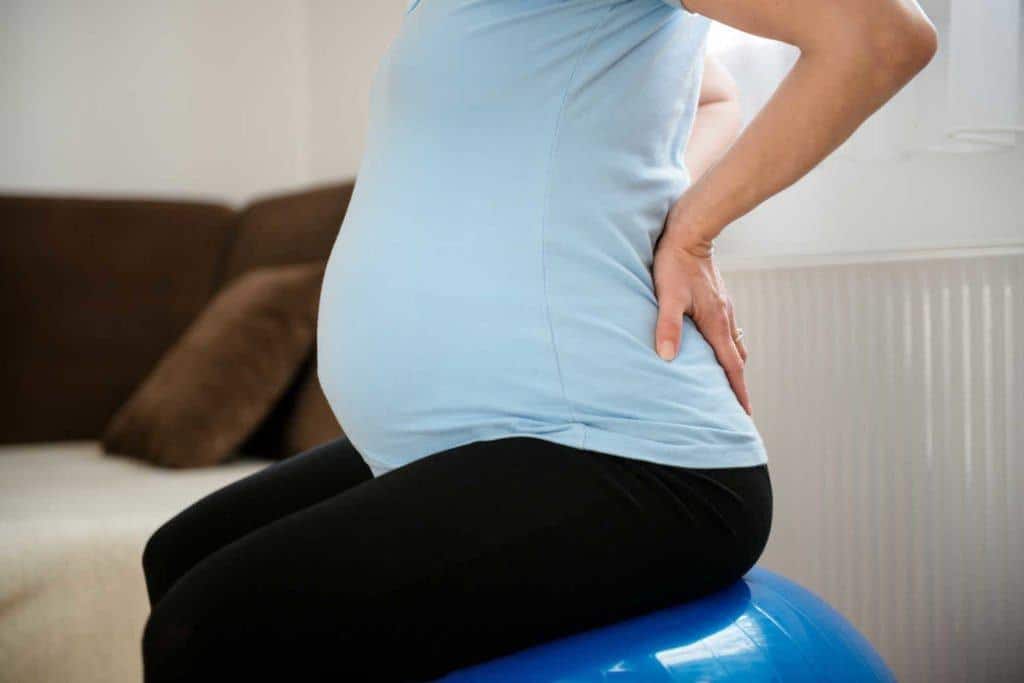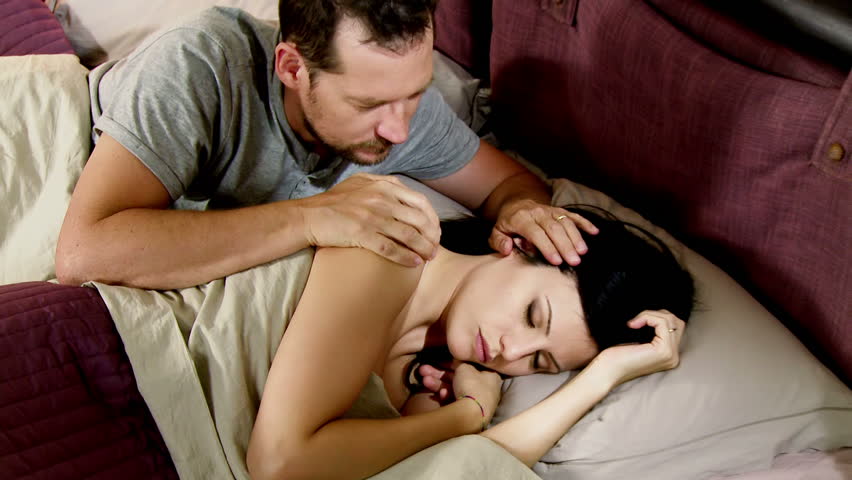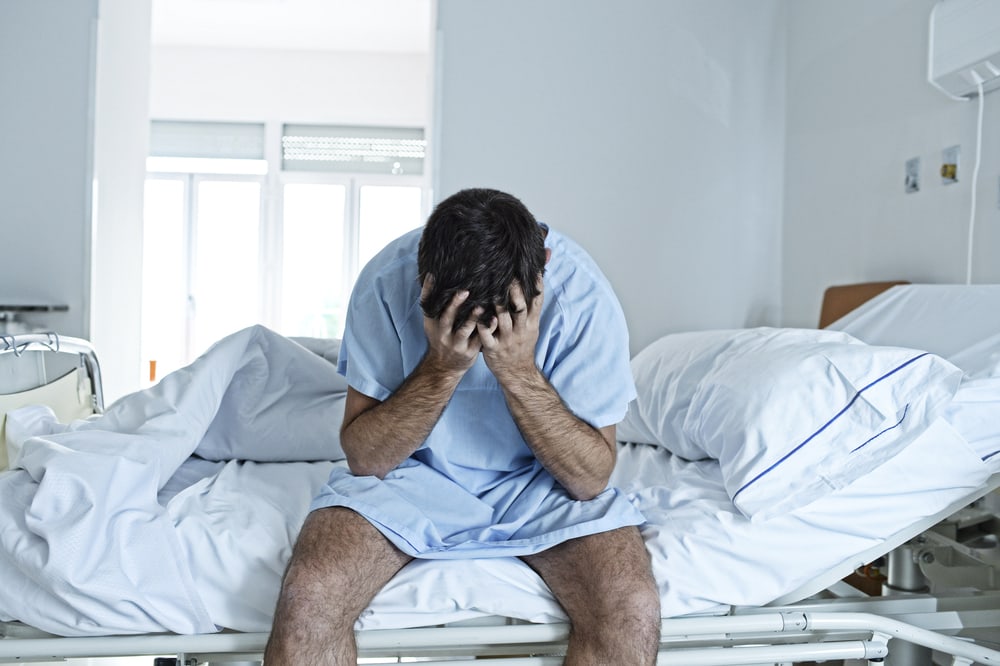Contents:
- Medical Video: Chest Pain in Children | Frequently Asked Questions | Cincinnati Children's
- Various conditions that can cause left chest pain
- 1. Angina
- 2. Heart attack
- 3. Myocarditis
- 4. Cardiomyopathy
- 5. Pericarditis
- 6. Stress
- 7. Panic attacks
- 8. Indigestion
- 9. Bone damage
- 10. Hiatal hernias
- 11. Muscle damage
- 12. Costokondiritis
- 13. Pleurisy
- 14. Pneumothorax
- 15. Pneumonia
- 16. Lung cancer
- 17. Pulmonary hypertension
- 18. Pulmonary embolism
- What can be done to treat left chest pain?
Medical Video: Chest Pain in Children | Frequently Asked Questions | Cincinnati Children's
When you experience chest pain or pain, you may immediately be afraid, anxious, and immediately think nonsense. Indeed, the left chest pain is often associated with a heart attack, so you also cannot underestimate this pain. It is important for you to know other symptoms, to find out whether the pain requires special medical care or not.
If indeed this illness is caused by a heart problem, you will need treatment as soon as possible, but there are other causes that do not need treatment. Knowing the various conditions that can cause left chest pain will help you in seeking treatment while minimizing the possibility of life-threatening situations. So, what are the causes of left chest pain? Check out the full information below.
Various conditions that can cause left chest pain
Left chest pain can be caused by many things. Starting from things you might take for granted to signs of a serious medical condition, here are some conditions that can cause chest pain to the left:
1. Angina
Angina is not a disease, but is generally a symptom of heart disease, such as coronary heart disease. Angina is chest pain, discomfort, or pressure that occurs when the heart does not get enough oxygen from the blood. The lack of blood supply that reaches the heart results in less oxygen being carried to the heart to pump blood.
As a result. You will feel tightness or chest pain like being stabbed. You may often find things like this when you finish doing physical activity that has the effect of a heartbeat beating fast. Chest pain that is felt can sometimes spread to the left arm, neck, jaw, shoulder or back.
2. Heart attack
Heart attack is when the heart muscle is damaged because it cannot get oxygen-rich blood. One common feature of heart attack is left chest pain that can occur suddenly with severe pain. This left chest pain can be described as pressure, squeeze, or a feeling of tightness in the chest cavity.
Even in some cases, sufferers can also feel a sensation of heat and pain in the left side of the body. The left arm will also become stiff, painful, a stabbing sensation or other sensation, and these symptoms can also move on the right arm. Your arms will also feel weak, sore or suddenly feel heavier than normal.
If it's a heart attack, you will also suddenly feel short of breath. Some patients also experience cold sweat before finally having a heart attack. Left chest pain due to signs of heart disease can also move to your back.
However, not all sufferers experience these symptoms. In essence, if you experience sudden chest pain or slow and lasting, do not hesitate to consult a doctor immediately.
3. Myocarditis
Left chest pain can also be a sign if your heart muscle is inflamed. This inflammation is caused by a virus. In addition to chest pain, this condition can also be characterized by shortness of breath, abnormal heart rhythms (artemia), and fatigue.
Myocarditis can affect the heart's electrical system, weaken your heart or cause permanent damage to the heart muscle. If so, the heart muscle cannot contract to pump blood to parts of the body. This causes blood clots in the heart and causes heart attacks or even strokes.
4. Cardiomyopathy
Cardiomyopathy is a condition when the heart muscle weakens, stretches, or has problems with its structure. This condition usually occurs when the heart cannot pump blood or function properly.
One of the typical symptoms of cardiomyopathy is chest pain accompanied by shortness of breath, heart palpitations, dizziness, and swelling of the ankles, soles of the feet, legs, stomach and tendons in the neck.
5. Pericarditis
The pericardium is two thin layers of tissue surrounding the heart. When the area is inflamed or irritated, it will cause sharp punctures on the left or middle side of your chest.
You may also experience pain in one or both shoulders. Other symptoms of this condition are often similar to the symptoms of a heart attack.
6. Stress
When you are stressed, maybe you will also feel pain in the chest, where the pain can appear on the left side. As with heart disease, you can also feel tightness in the chest and will worsen during periods of stress. Lifestyle can also put pressure on your heart, so the arteries tighten and left chest pain occurs.
Diabetes, obesity, or excessive consumption of alcohol and tobacco can also trigger the risk of left chest pain. If you don't check and treat it, this problem will be a severe heart problem, such as a heart attack.
7. Panic attacks
Panic attacks usually occur suddenly and tend to peak within 10 minutes. One characteristic symptom is chest pain. In addition to chest pain, several other typical symptoms are shortness of breath, heart palpitations, trembling, dizziness, cold sweat, ho flashes, or nausea. Symptoms of a panic attack can sometimes lead to a heart attack.
If you feel a panic attack, visit a doctor immediately. Heart and thyroid disorders can produce similar symptoms. Panic disorder is one of the mental health problems that can be treated. Your doctor may recommend psychotherapy. If this problem occurs on an ongoing basis, some prescription drugs may help relieve symptoms.
8. Indigestion
Sometimes various problems that affect your digestive system can also cause chest pain on the left. Because the breastbone is right in front of some of the main digestive organs. That is why all conditions related to your esophagus, stomach and intestines can cause pain in the chest. One of the most common digestive problems that causes chest pain isheartburn, which occurs when stomach acid rises into the esophagus. This condition generally occurs after you eat foods that trigger stomach acid to rise.
In addition, chest pain on the left can also be caused because you experience acute pancreatitis. Acute pancreatitis is inflammation of the pancreas which is characterized by pain in the abdomen that can spread to the chest and back. Pain can appear suddenly. Other symptoms that arise can be nausea, vomiting, fever, and a fast moving pulse.
9. Bone damage
The breastbone (sternum) is a longitudinal flat bone located in the center of the chest. Damage to the skeletal structure due to a broken left breastbone can cause severe pain in the area of the left chest and upper body part. The most common cause of this condition is due to a hard impact in the center of the chest, such as a driving accident, getting hit while in sports, falling or doing other risky physical activities.
If you have a breast fracture, you should get medical attention immediately. This is to anticipate the development of the risk of continued injury to vital organs in the body. Because this bone is connected to the ribs that protect the body's vital organs such as the heart, lungs, stomach and liver.
Bone damage can be diagnosed using X-rays. Treatment can take the form of surgery and paralyze the damaged area.
10. Hiatal hernias
A hiatal hernia is when the top of your stomach is pushed up to the surface of the diaphragm. The diaphragm is a muscle wall that separates the stomach from the chest. When the size of the hernia begins to enlarge, this can cause various symptoms, one of which is heartburn. Heartburn is a burning sensation in the chest due to an increase in acid in the esophagus. This condition can be the cause of your left chest pain.
Other symptoms of hiatal hernia include difficulty breathing, heart palpitations, frequent belching, and maybe problems swallowing.
11. Muscle damage
The breastbone and ribs are enveloped by many muscles attached to it. Without realizing it, a severe cough or excessive exercise can cause your chest muscles to tighten. Tension or tear of muscle fibers can cause pain and cause swelling above and around the chest.
And, if you feel pain when pressing on your chest wall, it might be caused by a musculoskeletal injury, not caused by the heart. You can diagnose this condition using ultrasound, or MRI and physical examination.
12. Costokondiritis
Costocondritis is one of the most common causes of chest pain. Costokondiritis occurs when the cartilage in the ribs becomes inflamed to cause pain. Left chest pain can be one of the symptoms if the inflamed bone is in the left lung.
This pain does not only occur in the chest but also spreads backwards. Costocondritis is not life threatening because usually this one condition will disappear after a few days. But if you have certain concerns about this condition, you should immediately consult a doctor.
13. Pleurisy
Pleuritis is inflammation that attacks the pleura, which is the lining of the lung. Inflammation can be caused by bacterial infections that attack the airways, tumors, broken ribs, lung cancer, chest injuries, and lupus. Inflammation of the lining of the lungs can cause chest pain when deep breathing or coughing and sneezing.
If inflammation attacks the left lung, you can feel a sharp pain in the lungs or chest to the left.
14. Pneumothorax
Pneumothorax is a condition when there is air collected in the pleural cavity, which is a thin cavity between the lungs and chest wall. This condition can be caused by a gap that forms in the pleural cavity due to injury to the chest wall or tears that occur in lung tissue. This causes pain on both sides of the chest suddenly because the air trapped in the lung cavity presses the lungs and makes your lungs collapse, aka deflate.
Other symptoms of this condition are shortness of breath or fast breathing, blue skin, and coughing. Treatment will depend on the cause. However, generally seek medical help immediately if you experience this condition. If not handled properly, this condition can cause death.
15. Pneumonia
Sharp, piercing chest pain when you take a deep breath or a continuous cough accompanied by phlegm can be a sign that you have pneumonia or pneumonia. Especially if you have recently experienced a respiratory disease such as bronchitis or influenza.
Pneumonia is an infectious disease that attacks the lungs, causing the air sacs in the lungs to become inflamed and swollen. This health condition is also often called the wet lung, because the lungs can be filled with water or mucus fluids.
16. Lung cancer
Left chest pain that doesn't heal can also be a symptom of lung cancer. Sign and Other symptoms of lung cancer are persistent coughing, wheezing, bloody phlegm, hoarseness, and inflammation in the lungs. Everyone is at risk of developing lung cancer, but active and passive smokers are more at risk.This condition not only attacks the lungs, but can attack other parts of the body.
Symptoms may not appear in early stage lung cancer. In general, the sooner you are diagnosed and treated, the better the results.
17. Pulmonary hypertension
Pulmonary hypertension is high blood pressure that occurs in the lungs. Besides being able to cause left chest pain, this condition can also cause a person to experience shortness of breath, weakness and lethargy, dizziness, or even fainting.
As the disease progresses, pulmonary hypertension can cause irregular heartbeat. If not treated immediately, it can cause heart failure.
18. Pulmonary embolism
Pulmonary embolism is a condition when one of the arteries in the lungs is blocked by a blood clot. In many cases, pulmonary embolism is caused by a clot of frozen blood that flows into the lungs from the legs, or more rarely from other body parts (deep vein thrombosis).
Pulmonary embolism can cause left chest pain, shortness of breath, low blood pressure, and coughing up blood.Generally, pulmonary embolism is experienced by the elderly and obese people. Because frozen blood clots block the flow of blood to the lungs, this condition can be life-threatening if not treated immediately.
What can be done to treat left chest pain?
The following are things you can do:
- You should visit a doctor, if the pain from heart disease feels like a tightness compared to like a pierced pain.
- You can lie in bed and take short breaths until your breath is calm. Drink a glass of water, if that makes you calm.
- Change your lifestyle to be healthier. You can have a healthy diet, stop drinking alcohol, and do regular exercise.

